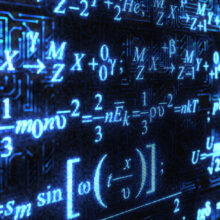-
- Get access
- Contains open access
- ISSN: 0001-8678 (Print), 1475-6064 (Online)
- Editor: Professor Peter Taylor University of Melbourne, Australia
- Editorial board
The Advances in Applied Probability has been published by the Applied Probability Trust for over four decades, and is a companion publication to the Journal of Applied Probability. It contains mathematical and scientific papers of interest to applied probabilists, with emphasis on applications in a broad spectrum of disciplines, including the biosciences, operations research, telecommunications, computer science, engineering, epidemiology, financial mathematics, the physical and social sciences, and any field where stochastic modeling is used.
A submission to Applied Probability represents a submission that may, at the Editor-in-Chief’s discretion, appear in either the Journal of Applied Probability or the Advances in Applied Probability. Typically, shorter papers appear in the Journal, with longer contributions appearing in the Advances.
A submission to Applied Probability represents a submission that may, at the Editor-in-Chief’s discretion, appear in either the Journal of Applied Probability or the Advances in Applied Probability. Typically, shorter papers appear in the Journal, with longer contributions appearing in the Advances.
Recently published articles
Mathematics « Cambridge Core Blog

-
Compositio Mathematica authors to receive 2025 Frontiers of Science award
- 30 October 2025,
- Compositio Mathematica is thrilled to congratulate Luisa Fiorot, Teresa Monteiro Fernandes, and Claude Sabbah on receiving a prestigious 2025 Frontiers of Science...

-
A free boundary model for transport-induced neurite growth
- 12 December 2024,
- Understanding the mechanisms of neuronal development is vital for elucidating the intricate processes that govern the nervous system. In a neuron’s final...

-
New research explores collaborative population dynamics of plants and insects
- 20 August 2024,
- Understanding the evolution of nature through a model describing collaborative population dynamics of plants and insects.

Tweets by @cambUP_maths